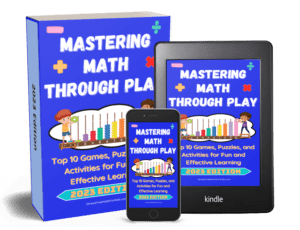Why is learning to use related facts and number relationships to solve single-digit problems so important? The short answer is it helps children develop necessary knowledge for mental math down the road.
Thanks to Nelly Boyd from Counting With Kids for sharing this on Instagram and giving me permission to post it! Nelly is a mom of two and former Director of Math for six elementary and middle schools. She has trained hundreds of teachers and school administrators to teach math for understanding–not just memorization. Now, she helps thousands of parents around the world relearn math so they can raise children who thrive in math.

Click her name to follow her on Instagram, and/or sign up for her weekly newsletter here.
She writes:
An example of why it’s helpful to teach children through single digit math facts using simpler, related facts:
If a child understands that 9 +9 =18 because it’s 2 less than 10 + 10 (so the sum must also be 2 less than 20, ) THEN they have discovered a pattern that can continue to be used to mentally solve all kinds of larger addition problems.
- 99 + 99 must equal 198 because it’s 2 less than 100 + 100 =200.
- 99 +99+99= 297 because it’s 3 less than 100 +100+100=300.
- 999 + 999 = 1998 because it’s 2 less than 1000 + 1000=2000.
And so on. And so on. And so on.
But what about knowing these single digit facts from memory?
Of course we want children to develop fluency with single digit facts. This means no longer have to think about the answer and can simply retrieve the answer automatically from long term memory. But teaching them to use related facts and number relationships as a reasoning strategy while they are building fluency connects the facts to larger patterns in our number system. This enables them to solve more complex problems mentally in the future.

🤔 How do you support this at home?
1️⃣ My favorite strategy is to start by modeling this approach in the way that I solve.
So if my child solves 9+9 by counting 9 and 9 more to get to 18, I might say, “I see exactly what you did. I thought about it a different way. I saw that 9+9 is 2 less than 10+10 which I know is 20. So 9+9 must be 18 because that’s 2 less than 20.”
(Showing them with ten frames can help them visualize too.)
2️⃣ Later, I can guide them towards solving with related facts instead of counting by saying, “Can you think of another way someone else might solve?” or “Let’s try thinking of another addition fact we already know that can help us figure this out.”
Thanks again, Nelly, for all of these great ideas!

For more teaching resources on this topic see How To Give Students Confidence When Learning Patterns in Addition on Teaching With Kaylee B.



